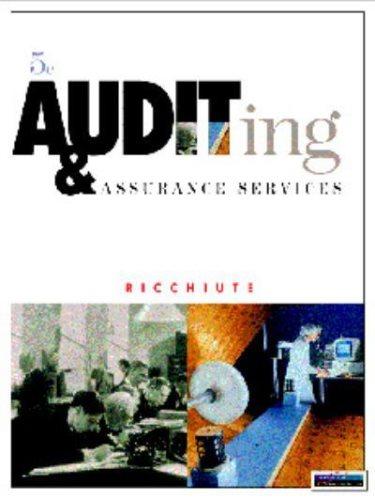Applied widely first in the 1960s and 1970s, the use of statistical sampling was initially motivated largely
Question:
Applied widely first in the 1960s and 1970s, the use of statistical sampling was initially motivated largely by questions raised in legal liability cases involving public accounting firms, among them: Why did the public accounting firm not become aware of embezzlement schemes that, when made public thereafter (often by the perpetrators themselves, e.g., Ernst & Ernst v. Hochfelcier: Chapter 5), led to an audit client's financial collapse?
In response, several major public accounting firms consulted with statisticians to develop sampling plans that would document not only the strategy used to examine the account balance or class of transactions audited, but that would also provide a defense for why specific transactions were selected for testing and others were not (e.g., random sampling).
However, in recent years some auditors have become more cautious about applying classical variables sampling and probability-proportional-to-size sampling in practice, partly because some sampling plans may result in excessive sample sizes in some circumstances, and partly because research suggests caution before blindly over-relying on the sampling results obtained from some sampling applications. For example, D. W. Wright, "Augmenting a Sample Selected with Probabilities Proportional to Size"
(Auditing: A journal of Practice and Theory, Spring 1991), raises a timely caution to audit practice given the popularity of PPS sampling today: Augmented (i.e., supplemental) samples obtained with systematic monetary-unit skip-intervals will tend to include sampling units that over- (or under-) represent the smaller (or larger) population items.
Required:
Select an article about classical variables sampling or probability proportional-to-size sampling from one of the following journals: Auditing: A journal of Practice and Theory, The Accounting Review, or journal of Accounting Research. For the article selected, draft a report that addresses each of the following questions:
1. What is the researcher's motivation for the study—that is, why is the study important?
(Note: The motivation for a study is typically communicated in the opening sections of a journal article.)
2. Summarize the article in your own words.
3. What, if any, are the implications of the article for audit practice—that is, should auditors think differently about audit sampling as a result of the article?
Step by Step Answer:






